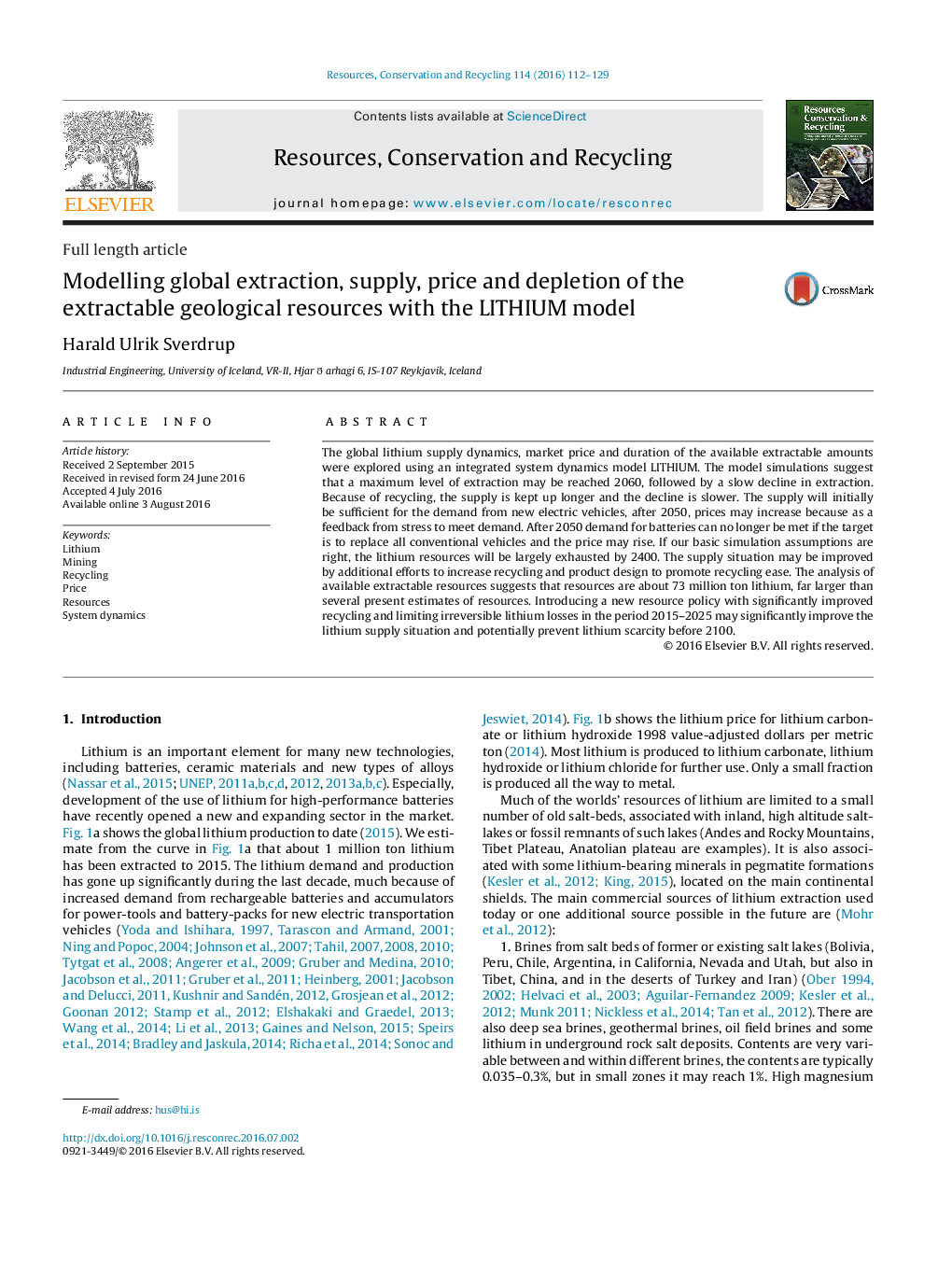| Article ID | Journal | Published Year | Pages | File Type |
|---|---|---|---|---|
| 1062667 | Resources, Conservation and Recycling | 2016 | 18 Pages |
•A systems dynamics model for lithium was developed.•The integrated model extracted amounts, supply-demand dynamics and the general price level well compared to data.•The goal to replace the present fleet of conventional vehicles with electric vehicles based on lithium face substantial challenges that would require substantial policy interventions.•Increased recycling makes more lithium available, but not sufficiently for replacing all conventional cars by electric cars.
The global lithium supply dynamics, market price and duration of the available extractable amounts were explored using an integrated system dynamics model LITHIUM. The model simulations suggest that a maximum level of extraction may be reached 2060, followed by a slow decline in extraction. Because of recycling, the supply is kept up longer and the decline is slower. The supply will initially be sufficient for the demand from new electric vehicles, after 2050, prices may increase because as a feedback from stress to meet demand. After 2050 demand for batteries can no longer be met if the target is to replace all conventional vehicles and the price may rise. If our basic simulation assumptions are right, the lithium resources will be largely exhausted by 2400. The supply situation may be improved by additional efforts to increase recycling and product design to promote recycling ease. The analysis of available extractable resources suggests that resources are about 73 million ton lithium, far larger than several present estimates of resources. Introducing a new resource policy with significantly improved recycling and limiting irreversible lithium losses in the period 2015–2025 may significantly improve the lithium supply situation and potentially prevent lithium scarcity before 2100.
